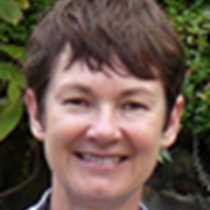Madang, Papua New Guinea
Making excellent timing overnight, we awoke anchored in the calm harbour of the coastal town Madang in the Bismarck Sea. A balmy 77 degrees outside, we readied ourselves for exploration on land. Madang (old German name: Friedrich-Wilhelmshafen) is the capital of Madang Province and is on the north coast of Papua New Guinea. It was first settled by the Germans in the 19th century. The Japanese invaded and captured Madang without a fight during World War II in 1942. In September 1943, Australian forces launched a sustained campaign to retake the Finisterre Range and Madang and the town was captured on April 24, 1944. During the occupation and fighting the town was virtually destroyed and had to be rebuilt afterwards.
We set off along the south coast to visit Bilbil Village and the sulphur caves. Once we had strolled through the tropical gardens and seen the iridescent waters of the caves, fed the large tame eels along side, we continued onto Bilbil, famous for their earthenware pots. Like the Motuans of the Port Moresby area, they once traded these items far up and down the coast in large lalaoika (trading sailing vessels). Their attractive houses are made from sago and todd palms, usually without nails. The walls and fold-out windows are made from sago palm leaf stems tied into frames and panels with the leaves, either intertwined or sewn into long shingles. The pottery demonstration was fascinating and made even more intriguing when we discovered that the exquisite pots ready for sale where crafted completely by hand and fired in an open pit. Our morning visit was made complete with a tumbuna (before white man) sing sing with women, men and children joining in, singing the traditional songs of bygone years. Our local guide, Busy Bee, was a fine orator expelling information, traditions along with directions via his portable PA system.
From our base onboard the Oceanic Discoverer we returned after lunch to explore this scenic town, wandering past the banyan trees crowded with flying fox (fruit bats), shore lined artifact vendors, crowded convenience stores ending at the colourful downtown market. Fruit, vegetables and bettlenut (buai) stands jostled for space alongside t- shirt and souvenir bag sellers. Some of us took up the option of a cool drink at the nearby Madang Resort, diving a sunken Japanese wreck with others on a quest to find chocolate, coffee, stickers and a hat pin (the latter to no avail).
With our purchases in-hand we bid farewell to this peaceful town. Throughout the trip we had witnessed the ‘battle of the bands’ within villages, this evening at recap the ‘battle of the culturalist vs the naturalist’ would enfold as Dennis Cornejo and I vied for airspace, one defending the mighty coconut as a tree of life not the taker of life the other in opposition - all the while our ship steaming towards the mighty Sepik River.




